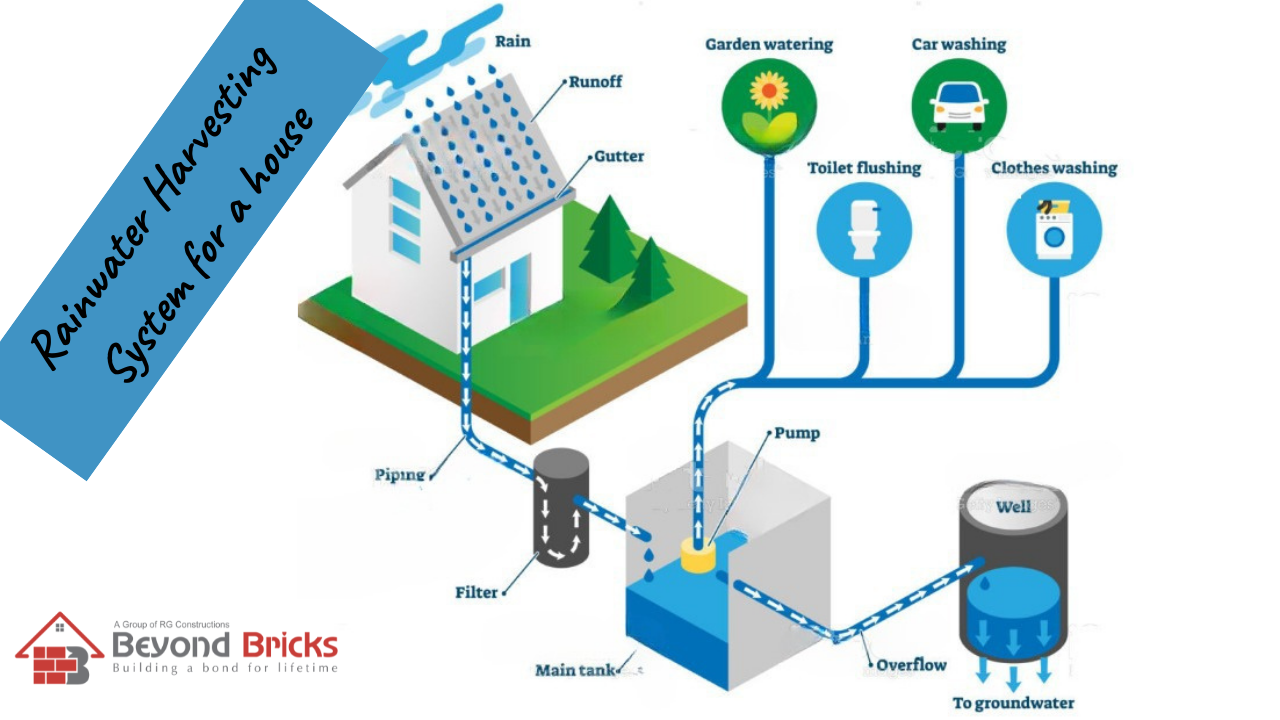We all know that water is essential for life. And yet, even though water is so necessary, we often take it for granted. We use it carelessly, without thinking about where it comes from or where it goes.
But the reality is that water is a finite resource. And as the population continues to grow and the demand for water increases, we need to start conserving this precious resource. One way to do this is through rainwater harvesting. In this blog post, we'll explore why rainwater harvesting is so important and how it can benefit your home. From reducing your water bill to providing a source of emergency water, there are many reasons to start harvesting rainwater today. So read on to learn more!
What is rainwater harvesting?
Rainwater harvesting is the process of collecting and storing rainwater for future use. It is an ancient practice that has been used for centuries to provide water for crops, livestock, and people. In recent years, it has gained popularity as a way to conserve water and reduce dependence on groundwater and surface water sources.
There are many benefits to rainwater harvesting, including reducing demands on municipal water supplies, providing a source of water during drought conditions, and reducing storm-water runoff and flooding. Additionally, rainwater is a free source of water that can be used for irrigation, household needs, or even drinking if it is properly filtered.
If you are considering rainwater harvesting for your home or business, there are a few things to keep in mind. First, you will need to determine how much rainfall you can expect in your area and calculate the amount of storage you will need to catch it all. Second, you will need to choose the right type of storage system for your needs. And finally, you will need to ensure that your system is properly maintained to prevent contamination.
The many benefits of rainwater harvesting
Rainwater harvesting is a process where rainwater is collected and stored for future use. There are many benefits of rainwater harvesting, including reducing the demand for municipal water supplies, reducing stormwater runoff and flooding, and providing a source of water during times of drought.
Rainwater harvesting can be used to supplement your water needs for irrigation, landscaping, flushing toilets, and even drinking! Water that would otherwise be lost to runoff or evaporation is instead captured and reused. This helps to conserve our precious freshwater resources.
In addition to the environmental benefits, rainwater harvesting can also save you money on your water bill. Municipal water supplies are becoming increasingly expensive as demand outpaces supply.
By using rainwater for your needs, you can reduce or even eliminate your dependence on these costly public utilities. With all of these benefits, it’s no wonder that rainwater harvesting is becoming an increasingly popular practice around the world.
There are many ways to harvest rainwater, from simple rain barrels to more complex systems that collect and store water in underground tanks. No matter what method you choose, rainwater harvesting is a great way to save water and money.
So why not give rainwater harvesting a try? It’s good for the environment and your wallet!
Keep reading: DIFFERENT TYPES OF CONCRETE USED IN CONSTRUCTION
How to set up a rainwater harvesting system
A rainwater harvesting system can be a great way to save money on your water bill and help the environment. Here are some tips on how to set up a rainwater harvesting system:
1. Decide where you want to collect the rainwater. You will need a catchment area that is large enough to hold the amount of water you want to collect. This could be a roof, gutter, or even a pond.
2. Make sure your catchment area is clean and free of debris. This will ensure that the water you collect is clean and safe to use.
3. Collect the rainwater in barrels or tanks. Be sure to seal them tightly so that no contaminants can get in.
4. Once you have collected the rainwater, you can use it for watering plants, washing clothes, or even drinking!
How to utilize water collected from Rainwater harvesting?
Water collected from rainwater harvesting can be used in several ways. It can be used for watering plants, cleaning, and even drinking.
When using rainwater for plants, it is important to remember that the water is not treated and may contain harmful bacteria. It is best to use rainwater for watering plants that are not edible.
Cleaning with rainwater is safe, as long as the water is allowed to air dry afterward. This will ensure that any harmful bacteria are killed off.
Rainwater can also be used for drinking, but it must be filtered first. There are several different ways to filter rainwater, so be sure to research the best option for your needs.
why one needs to implement rainwater harvesting while building a house
There are many reasons why one needs to implement rainwater harvesting while building a house. One of the most important reasons is to conserve water. With the ever-increasing population, the water demand is also increasing day by day. As a result, there is a need to find ways to conserve this precious resource.
Rainwater harvesting is one of the most efficient ways to conserve water. It involves collecting rainwater from rooftops and other surfaces and storing it in tanks or barrels for future use. This stored water can be used for various purposes such as watering plants, washing clothes, and even bathing.
Another reason why rainwater harvesting is important is that it helps in reducing the load on traditional water sources such as rivers and lakes. By harvesting rainwater, we can reduce the amount of water that needs to be drawn from these sources. This will help in preserving these water bodies and ensure their long-term sustainability.
Lastly, rainwater harvesting also has numerous environmental benefits. It helps in reducing soil erosion, flooding, and drought. It also recharges groundwater aquifers and helps in maintaining a healthy ecosystem balance.
Conclusion
In conclusion, rainwater harvesting is a great way to save money and conserve water. Additionally, it's an eco-friendly option that can help reduce your carbon footprint. If you're looking for a way to make your home more sustainable, consider investing in a rainwater harvesting system.
Thank you!! Hope you liked our Article !!
Keep Reading : 12 BASIC COMPONENTS OF A BUILDING STRUCTURE





